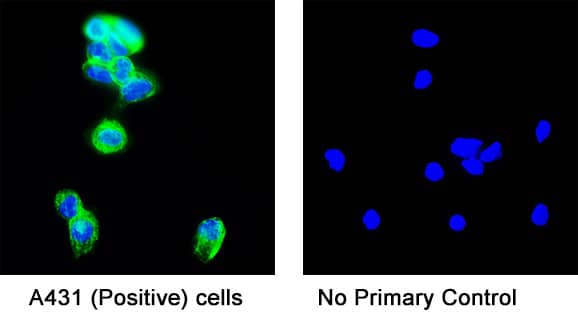Human TLR9 Antibody Summary
Asn64-Glu189
Accession # Q9NR96
Customers also Viewed
Applications
Please Note: Optimal dilutions should be determined by each laboratory for each application. General Protocols are available in the Technical Information section on our website.
Scientific Data
 View Larger
View Larger
Detection of TLR9 in Human PBMC lymphocytes by Flow Cytometry. Human PBMC lymphocytes were stained with Sheep Anti-Human TLR9 Antigen Affinity-purified Polyclonal Antibody (Catalog # AF3658) followed by NorthernLights™ 637-conjugated Anti-Sheep IgG Secondary Antibody (Catalog # NL011) and Mouse Anti-Human CD19 PE-conjugated Monoclonal Antibody (Catalog # FAB4867P). Quadrant markers were set based on control antibody staining (Catalog # 5-001-A).
 View Larger
View Larger
TLR9 in Human Tonsil. TLR9 was detected in immersion fixed paraffin-embedded sections of human tonsil using Sheep Anti-Human TLR9 Antigen Affinity-purified Polyclonal Antibody (Catalog # AF3658) at 1 µg/mL overnight at 4 °C. Tissue was stained using the Anti-Sheep HRP-DAB Cell & Tissue Staining Kit (brown; Catalog # CTS019) and counterstained with hematoxylin (blue). Specific staining was localized to membranes of lymphocytes. View our protocol for Chromogenic IHC Staining of Paraffin-embedded Tissue Sections.
Preparation and Storage
- 12 months from date of receipt, -20 to -70 °C as supplied.
- 1 month, 2 to 8 °C under sterile conditions after reconstitution.
- 6 months, -20 to -70 °C under sterile conditions after reconstitution.
Background: TLR9
TLR9 (Toll receptor 9; also CD289) is a 145-150 kDa member of the Toll-like receptor family of molecules. It is expressed by colonic epithelium, CD123+ plasmacytoid dendritic cells, and transitional B cells, and responds to unmethylated DNA CpG motifs that exhibit either a GTCGTT sequence (in human), or a GACGTT sequence (in mouse). TLR9 is found in the ER, and translocates to either the cell membrane, or to lysosomes where it binds bacterial DNA. Precursor human TLR9 is a type I transmembrane protein 1032 amino acids (aa) in length. It possesses a 793 aa extracellular region that contains 26 LRRs (aa 26-818), plus a 193 aa cytoplasmic domain. The full-length 150 kDa form is suggested to be ligand-binding but nonsignaling. The active form is believed to be an 80 kDa cleavage product found in the endosome compartment. There are multiple splice forms. One contains a deletion of aa 2-16, a second possesses an alternate start site at Met58, while a third and fourth show alternative start sites aa 23 and 24 upstream of the standard site. Over aa 64-189, human TLR9 shares 76% aa identity with mouse TLR9.
Product Datasheets
Citation for Human TLR9 Antibody
R&D Systems personnel manually curate a database that contains references using R&D Systems products. The data collected includes not only links to publications in PubMed, but also provides information about sample types, species, and experimental conditions.
1 Citation: Showing 1 - 1
-
Fc?RIIIa Signaling Modulates Endosomal TLR Responses in Human CD4(+) T Cells
Authors: AK Chauhan
J. Immunol., 2017-05-12;0(0):.
Species: Human
Sample Types: Cell Lysates, Whole Cells
Applications: ICC, Western Blot
FAQs
No product specific FAQs exist for this product, however you may
View all Antibody FAQsIsotype Controls
Reconstitution Buffers
Secondary Antibodies
Reviews for Human TLR9 Antibody
There are currently no reviews for this product. Be the first to review Human TLR9 Antibody and earn rewards!
Have you used Human TLR9 Antibody?
Submit a review and receive an Amazon gift card.
$25/€18/£15/$25CAN/¥75 Yuan/¥2500 Yen for a review with an image
$10/€7/£6/$10 CAD/¥70 Yuan/¥1110 Yen for a review without an image


























